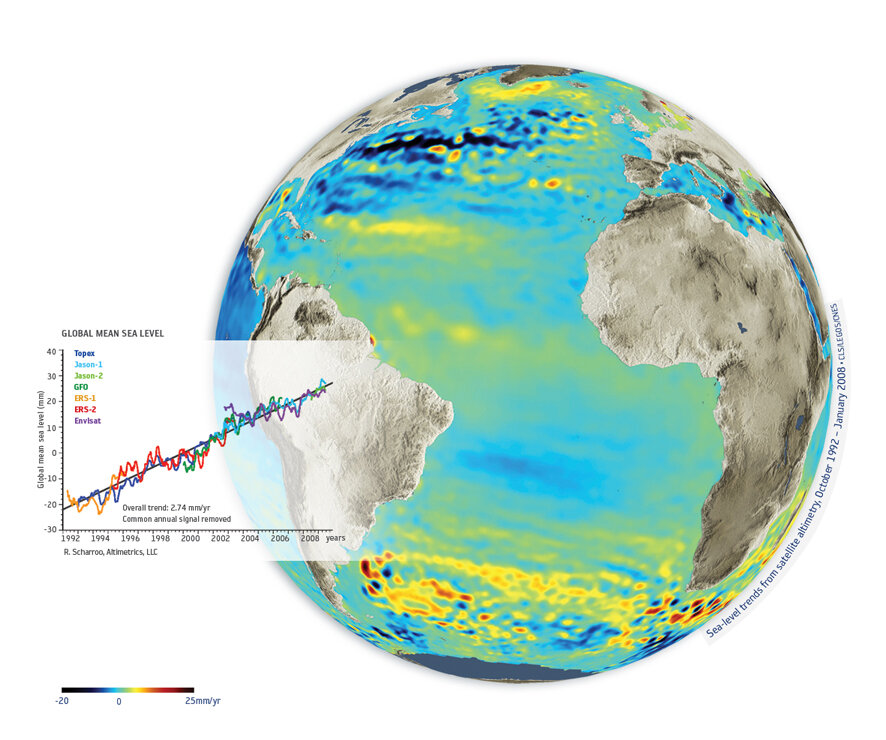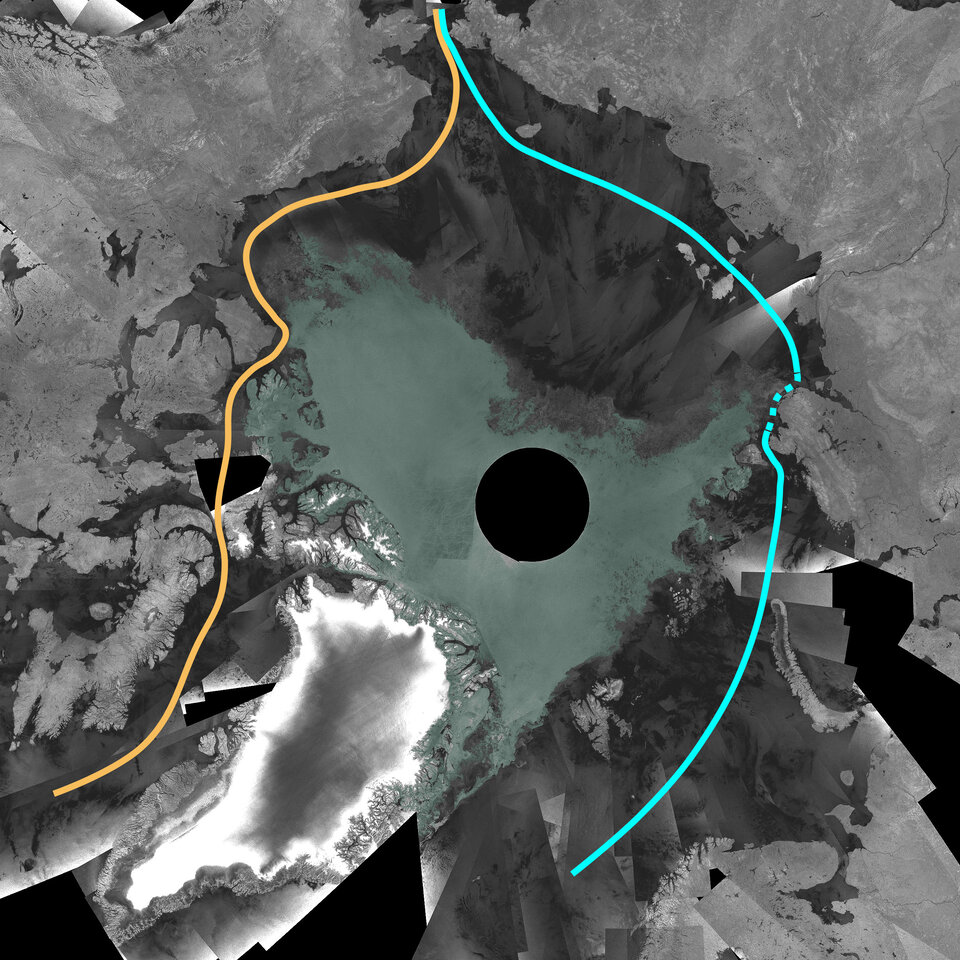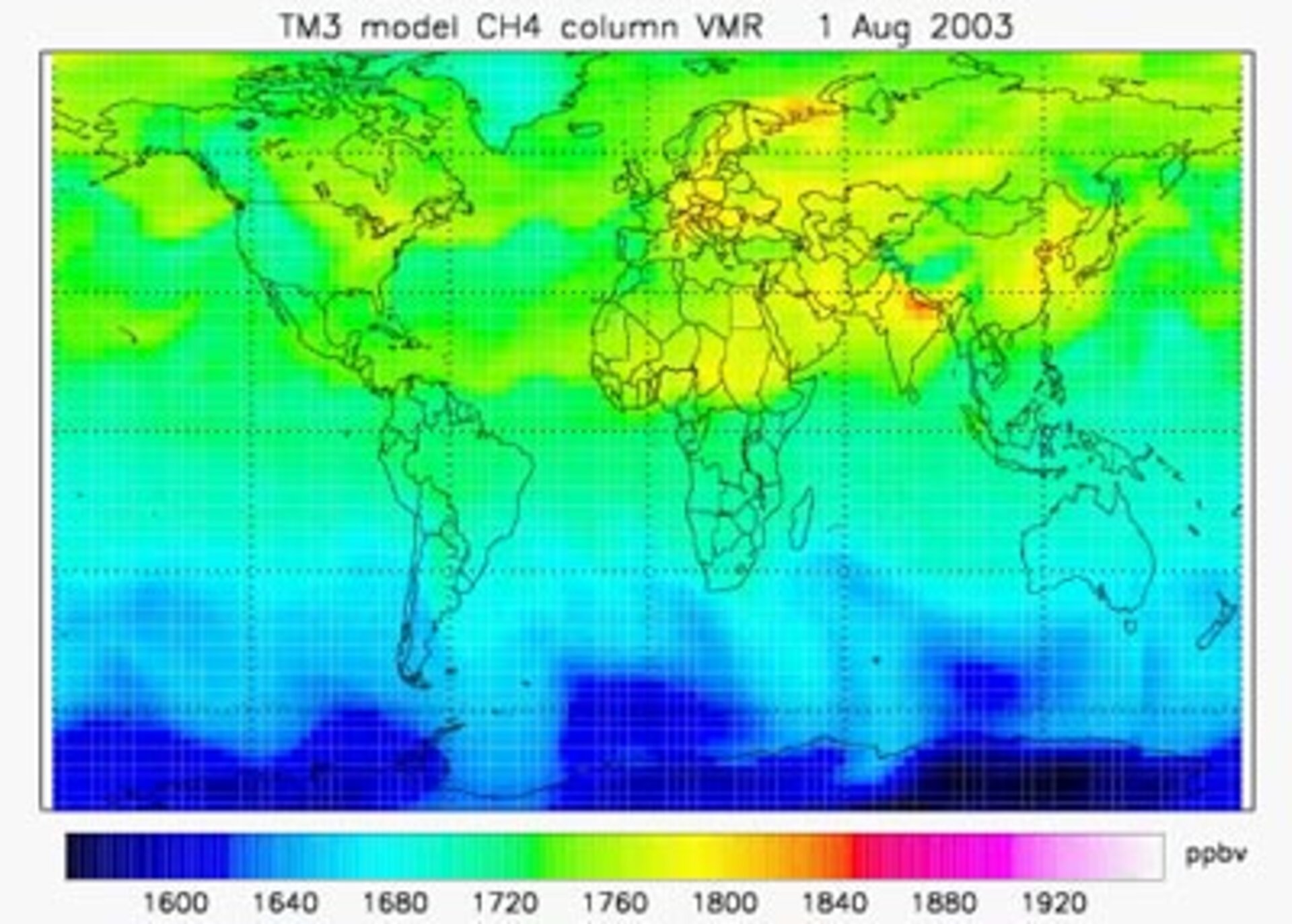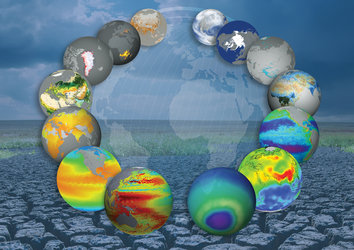ESA to attend COP15 Climate Conference
Government representatives from around the world will gather at the UN Climate Change Conference in Copenhagen, Denmark, 7–18 December, to negotiate a deal to restrict emissions of heat-trapping gases that drive climate change.
ESA will attend the conference – also known as COP15 as it will be the 15th Conference of the Parties to the UN Framework Convention on Climate Change (UNFCCC) – to present how satellites are playing an important role in observing the many aspects of our ever-changing planet.
The representatives are expected to decide on the future extent of reductions in greenhouse gas emissions by working out a new international agreement before the Kyoto Protocol expires in 2012. The Protocol commits its signatories to reduce levels of greenhouse gas emissions by 5%, from 1990 levels, between 2008 and 2012.
To understand better how the carbon that mankind is injecting into the atmosphere finds its way into natural reservoirs in Earth’s oceans, land surfaces and vegetation, climate scientists use Earth observation satellites to obtain a global perspective.

ESA will maintain an exhibit throughout COP15 and host a special side event on Earth observation satellites and systematic global climate observations. These events will highlight the major contribution that the Global Monitoring for Environment and Security (GMES) programme is now bringing, by assuring continuous global observations of many essential climate variables needed by the UNFCCC for the next 15–20 years.
The exhibition, hosted in partnership with the Danish Ministry for Science, opens to the public today at Kongens Nytorv in the city centre and will run until the end of the conference.
The rate at which global climate change is happening is arguably the most pressing environmental challenge facing the world today. The consequences of a warming climate are far-reaching, potentially affecting fresh water resources, global food production and sea level, and triggering an increase in extreme-weather events.

Earth’s climate has always varied naturally, so separating natural variability from changes induced by human activity is important for confronting today’s challenges. Information provided by satellites is crucial for measuring these parameters.
Over the last decades, satellites have provided an ever-clearer picture of the health of our planet and the signs of climate change. These data are provided to the scientific community to improve our understanding of the 'Earth System' and help to predict future climate. The data also form the basis on which policy-makers can build the most effective strategies for adapting to and mitigating the effects of a changing climate.
A European Response

Rising to the challenges of climate change, ESA and its Member States are developing initiatives to address issues related to our changing world. By making full use of Europe’s Earth observation space assets and working with partners in the Group on Earth Observations, ESA has started the Climate Change Initiative (CCI) to exploit robust long-term global records of essential climate variables.
Data from archives going back three decades from ESA and Member-State satellites, combined with data from new missions, will be used to produce information on a wide range of climate variables such as greenhouse-gas concentrations, sea-ice extent and thickness, and sea-surface temperature and salinity.
These data are required by the Global Climate Observing System to support the UNFCCC and the International Panel on Climate Change.
The CCI will provide the international scientific community with a powerful tool to monitor and understand better the state of the climate system and help to predict the effects a changing climate may bring. The initiative promises to be an extremely effective mechanism for providing datasets to governing bodies for managing climate change.







